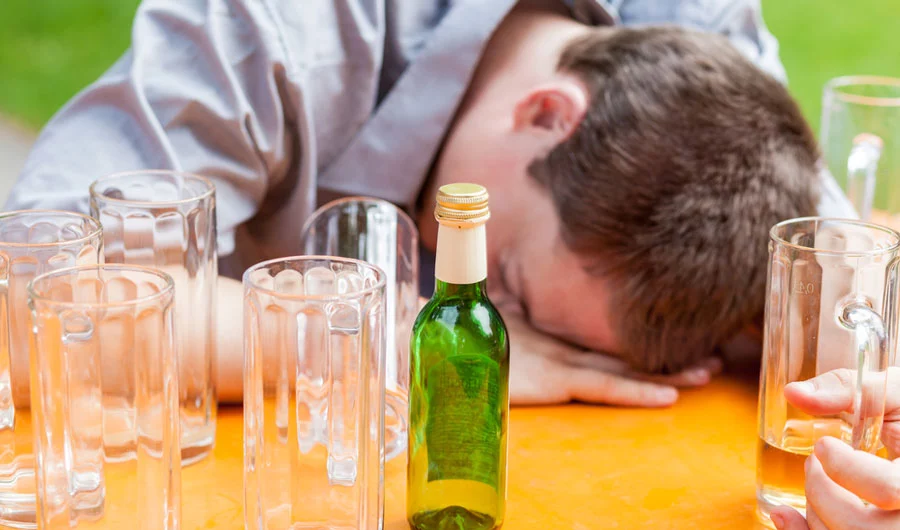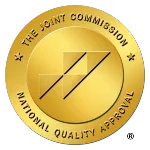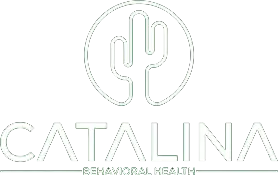The Typical Timeline for Intoxication
When it comes to alcohol, a universally recognized social lubricant, understanding the fine line between moderate consumption and problem drinking is crucial. One question that frequently arises is, “How long does being drunk last?” This inquiry, while seemingly straightforward, uncovers a complex web of factors influencing alcohol’s effects on the body.
Additionally, it exposes the grim reality that for some, being drunk may extend beyond mere hours into days, months, or even a lifetime.
For more information on how long being drunk lasts, treatment options for alcohol abuse, and how Catalina Behavioral Health can help, keep reading.
Get Help for Problem Drinking Now!
What Factors Affect Intoxication Levels?
While there is a general timeline of the stages of intoxication, it’s important to remember that alcohol affects everyone differently and individual factors can play an essential role in determining how long you remain drunk. It’s also possible for two people to have the same blood alcohol concentrations but feel different levels of intoxication.
Here are a few of the most common factors:
- Drinking Habits: How much alcohol and the speed at which you consume drinks will significantly affect the duration of intoxication. The more alcohol is consumed, the longer it will take your body to eliminate it.
- Body Weight and Composition: Individuals with higher body weight and muscle mass tend to have a faster metabolic rate, resulting in quicker alcohol processing and reduction of intoxication effects.
- Sex Generally, females metabolize alcohol differently: The male body tends to be able to tolerate more alcohol without feeling drunk. This means that it might take less alcohol for a female to become intoxicated and longer for the effects to wear off.
- Food Intake: Eating food before or while drinking alcohol sometimes affects alcohol absorption, delaying the onset of intoxication and allowing your body to metabolize alcohol at a more manageable pace. When a person drinks alcohol on an empty stomach, they may feel drunk for longer.
- Water Intake: Whether you drink water or not will affect how long you stay drunk, as drinking water will dilute alcohol in your body.
- Tolerance: Regular or heavy drinkers might build up a tolerance to alcohol, affecting the longevity and intensity of intoxication.
The Typical Timeline for Intoxication and Blood Alcohol Concentration

Before diving into the timeline, it’s important to understand what happens to our bodies when we consume alcohol. Once ingested, alcohol is rapidly absorbed into the bloodstream through our stomach and small intestine. The liver then metabolizes about 90% of the alcohol, while the remaining 10% is eliminated through breath, sweat, and urine.
Roughly speaking, the liver handles the alcohol metabolism of one standard alcoholic drink per hour. A standard drink is typically defined as:
- 12 ounces of beer with 5% alcohol
- 5 ounces of wine with 12% alcohol
- 1.5 ounces of distilled spirits with 40% alcohol
However, there are various factors that can influence the rate of alcohol absorption and metabolism, such as age, weight, gender, food consumption, and alcohol tolerance. Some products, such as Safety Shot claim to speed detox from alcohol, but more research needs to be done to determine efficacy.
Now that we know the basics, let’s break down the typical timeline for intoxication.
1. The Buzz – 30 Minutes to 2 Hours
About 30 minutes to 2 hours after your first alcoholic beverage, you might start feeling a mild buzz. This sensation is due to alcohol entering your bloodstream and affecting the release of neurotransmitters in your brain, leading to feelings of relaxation, lowered inhibitions, and mild euphoria.
2. Peak Intoxication – 2 to 3 Hours
Within 2 to 3 hours of consuming alcohol, your blood alcohol concentration (BAC) typically reaches its peak, and the higher your BAC, the more intoxicated you will usually feel. Depending on the amount you’ve consumed, you may experience slurred speech, poor muscle coordination, lightheadedness, and even impaired decision-making abilities.
3. Declining Intoxication – 3 to 6 Hours
As your liver continues to metabolize the alcohol in your bloodstream, your blood alcohol concentration will begin to decline gradually. Even with the same blood alcohol level, your appearance of intoxication can diminish as you become accustomed to the effects.
This phase usually lasts between 3 to 6 hours, and you might start feeling less intoxicated, become hungrier, or feel fatigued and weak.
4. The Hangover Phase – 6 to 24+ Hours
Once your body has metabolized most of the alcohol, the infamous hangover symptoms can set in. These symptoms include headache, nausea, dizziness, dehydration, and sometimes anxiety or irritability.
Hangovers can last anywhere from a few hours up to more than a day, depending on factors like the amount of alcohol consumed, dehydration, and individual alcohol tolerance.
How Long Does Being Drunk Last: How Much Alcohol is Too Much?

The legal limit for blood alcohol levels varies by country. However, in the United States, the legal limit for adults operating a vehicle is a BAC of up to .08%. This legal limit has been established based on studies that show significant impairment of driving skills at this BAC level.
It’s worth noting that the limit differs for commercial drivers and underage drivers. For commercial drivers, the legal BAC limit is 0.04%. For drivers under the legal drinking age of 21, many states enforce a zero-tolerance policy, meaning any detected BAC can result in a DUI charge.
Moderate Alcohol Consumption versus Harmful Alcohol Use
While the concept of “responsible drinking” is often promoted, with moderate alcohol consumption defined as up to 1 drink/day for women and up to 2 drinks/day for men, excessive alcohol use extends well beyond this moderate range.
Binge drinking and heavy chronic drinking are considered harmful types of alcohol abuse, elevating the risk of tissue and organ damage.
The Prevalence of Excessive Alcohol Use in the U.S.
Excessive use of alcoholic beverages is not an isolated phenomenon, as many people use it for celebration, to get through difficult times, and mental and physical relaxation, This risky behavior contributes to a variety of diseases, including cancer, cardiovascular disease, liver cirrhosis, and traumatic injury.
Alcohol Dependence: When Being Drunk Becomes a Lifestyle
In extreme cases, what starts as occasional binge drinking can evolve into a chronic problem, leading to alcohol dependence or alcoholism. Individuals grappling with alcoholism often exhibit a high tolerance for alcohol, withdrawal symptoms during periods of sobriety, and an inability to control or limit drinking despite the negative consequences.
In this sense, it’s possible for someone to ‘be drunk their entire lives.’ It doesn’t mean they are perpetually intoxicated in the traditional sense, but rather their lives are persistently affected by the consequences of their drinking.
Living in a state of perpetual chaos, physical discomfort, and emotional distress brought on by alcohol dependency is metaphorically akin to being ‘drunk’ indefinitely.
What are the Signs of Alcohol Abuse?

Recognizing the signs of alcohol abuse is crucial in getting help early. Some common signs that may indicate a problem with alcohol include:
- Drinking more than intended: An individual may start with the intention of having only one or two drinks but end up consuming significantly more.
- Neglecting responsibilities: Alcohol abuse can lead to neglecting personal and professional responsibilities, such as not showing up for work or taking care of personal hygiene.
- Continuing to drink despite negative consequences: If someone continues to drink, despite drunk driving, a negative impact on their relationships, work, or health, this is a strong sign of alcohol abuse.
- Tolerance: Over time, an individual may require more alcohol to feel the same effects, indicating a growing dependence on alcohol.
- Mixing Alcohol: Many people don’t realize that mixing alcohol and other drugs – even over-the-counter ones – can be dangerous. If someone is having a few drinks and taking drugs, prescription medications, or over-the-counter medications and isn’t able to stop, they may have an issue with drinking.
- Withdrawal symptoms: Experiencing withdrawal symptoms, such as nausea, shaking, or sweating, when alcohol levels decrease in the body is another sign of alcohol abuse.
If you or a loved one is displaying any of these signs, it’s crucial to seek help as soon as possible.
Getting Effective Treatment Options for Alcohol Abuse
There are several types of treatments available for alcohol abuse, ranging from traditional forms of therapy to more innovative and holistic approaches. Depending on the severity of the abuse and individual needs, a combination of treatments may be necessary. Below are some of the most common and effective treatment options for alcohol use disorders.
Detoxification and Medical Treatment
Detoxification is the first step in combating alcohol abuse, as it involves ridding the body of alcohol and any harmful toxins. This process can be uncomfortable and even dangerous, so it’s crucial to seek help from a medical professional.
At Catalina, our medical alcohol detox staff will monitor vital signs and provide appropriate medications to ease withdrawal symptoms and complications.
24 Hour Alcohol Detox and Rehab Helpline
Inpatient Rehab for Alcohol
Inpatient rehab, also known as residential treatment, facilities offer a structured environment where patients receive around-the-clock care and support. These programs typically last for a minimum of 28 days, with some extending up to several months. During this time, patients engage in various therapies, group sessions, and other activities designed to address the root causes of their addiction.
Some benefits of inpatient rehab include:
- 24/7 medical supervision and support
- A safe and structured environment free from triggers
- Targeted and comprehensive treatment plans
- Peer support from fellow individuals in recovery
Inpatient rehab may be the right choice for those with severe alcohol abuse issues, individuals requiring medical detoxification, or those with co-occurring mental health disorders.
Outpatient Rehab: Flexibility and Independence in Recovery

Outpatient rehab is an alternative to inpatient treatment, providing flexibility for those who need to maintain work or family obligations during recovery. Outpatient programs are typically offered in three levels of intensity: PHP, intensive outpatient, and outpatient.
Partial Hospitalization Programs (PHP)
PHPs involve attending treatment sessions for several hours a day, typically around 6 to 8 hours, at least five days per week. This level of care is suitable for individuals who require a structured and intensive treatment plan but do not require residential care. PHP programs may include individual therapy, group therapy, and medication management as needed.
Intensive Outpatient Programs (IOP)
Intensive outpatient programs or IOPs provide a similar structure to PHPs, but patients attend treatment for fewer hours per week, typically around 2 to 4 hours, for three or four days per week. IOPs may include therapy, 12-step meetings, and other supportive services.
This level of care is appropriate for individuals who have completed inpatient or PHP treatment and require continued support, or for those who do not require intensive rehabilitation but need structure and support.
Outpatient Services for Alcohol Use Disorders
Outpatient programs can vary but typically include:
- Individual Counseling Sessions: These sessions offer dedicated one-on-one time with a licensed therapist, where you work on identifying triggers, developing coping strategies, and creating a plan to prevent relapse.
- Group Therapy: Group sessions provide an opportunity to connect with others in recovery, share experiences, and offer mutual support. These meetings may be led by a professional counselor or other individuals in recovery.
- Educational Workshops: These workshops cover vital topics such as relapse prevention, stress management, communication skills, and the science behind addiction.
- Family Counseling: Addiction affects not only the individual but also their family members. Family counseling sessions help address the impact of addiction on the entire family system, repairing relationships and fostering a supportive environment for recovery.
Counseling and Therapy
Counseling and therapy are essential components of alcohol abuse treatment. They help individuals identify and work through the underlying psychological issues that contribute to their addiction. Several therapeutic approaches can be effective in treating alcohol abuse, including:
12 Step Programs

- 12-step programs, such as Alcoholics Anonymous (AA) and Al-Anon (for family members), are self-help support groups that follow a specific, step-by-step process for recovery from alcohol addiction. These groups are led by members who have successfully walked the path to sobriety. These programs advocate abstinence from all substances, and follow the widely held belief among addiction experts that an alcoholic can never safely resume drinking.
Medication-assisted Treatment (MAT)
Medication-assisted treatment combines behavioral therapy with prescribed medications to treat alcohol abuse. Some of the medications used in MAT include:
- Disulfiram (Antabuse): Disulfiram discourages people from drinking by causing unpleasant side effects, such as nausea and flushing, when alcohol is consumed.
- Naltrexone (Revia and Vivitrol): Naltrexone helps prevent relapse by blocking the pleasurable effects of alcohol, and reducing cravings.
- Acamprosate (Campral): Acamprosate works by restoring the balance of neurotransmitters in the brain and helping to reduce cravings for alcohol.
Get Alcohol Treatment Options Now!
Get Help With Drinking Too Much Alcohol Today
While the effects of a single drinking session might wear off after a few hours, the impact of chronic alcohol abuse can indeed last a lifetime. Alcoholism doesn’t only rob individuals of their health and happiness, but also their potential, relationships, and life opportunities.
Now that you know the answers to how long does being drunk last, we hope that it helps in supporting yourself or a loved one in seeking treatment and support to achieve sobriety.
The first step towards recovery is recognizing the problem. If you’re getting drunk regularly and need help, reach out to Catalina Behavioral Health for support, because being drunk can last a lifetime for many people.
All calls to our facility are confidential, so please reach out in confidence to get help for yourself or a loved one, today!





